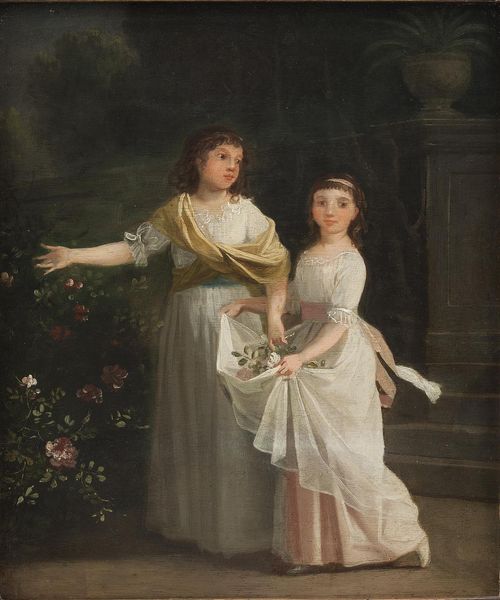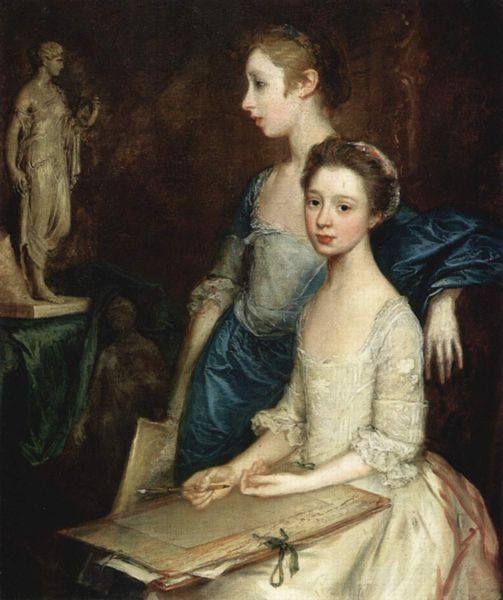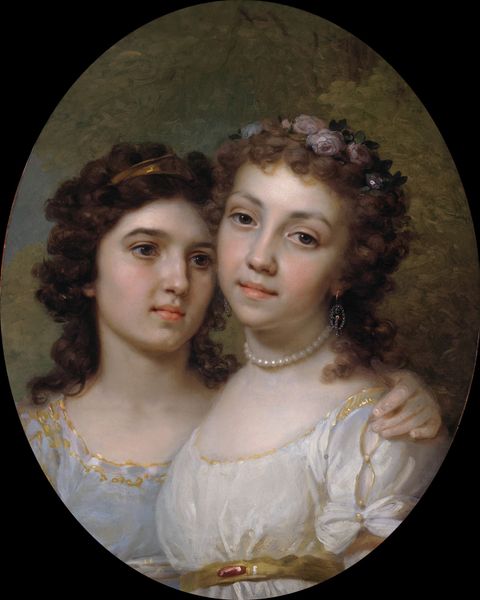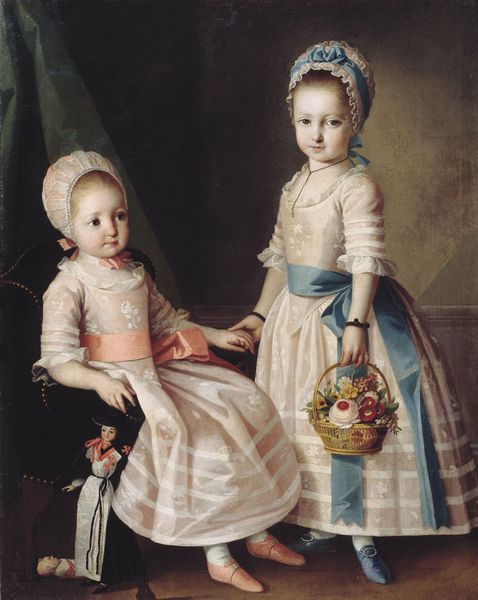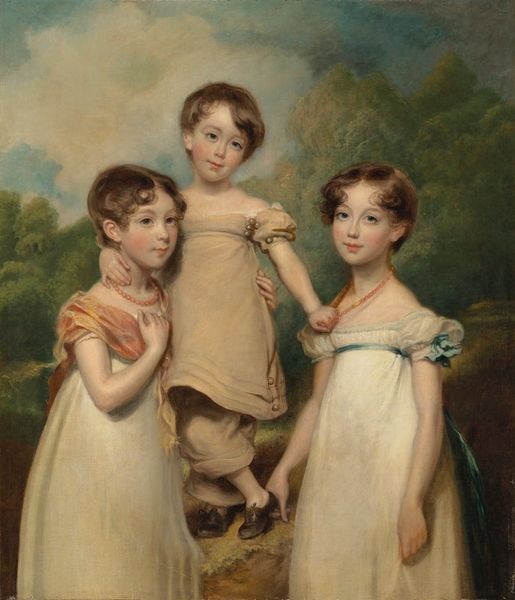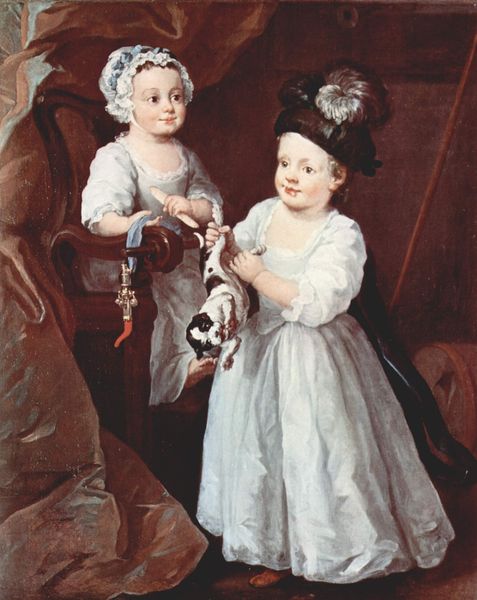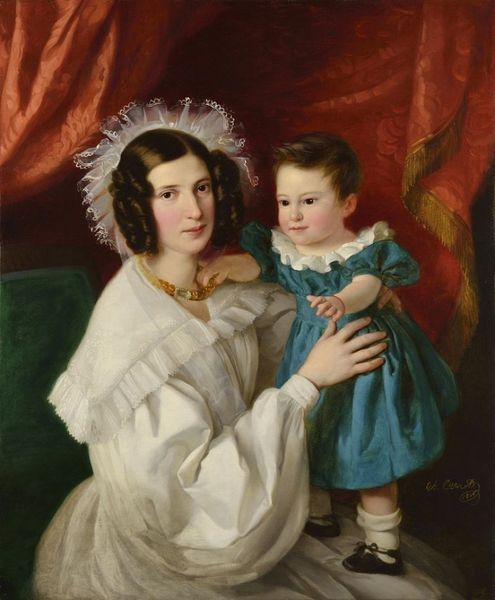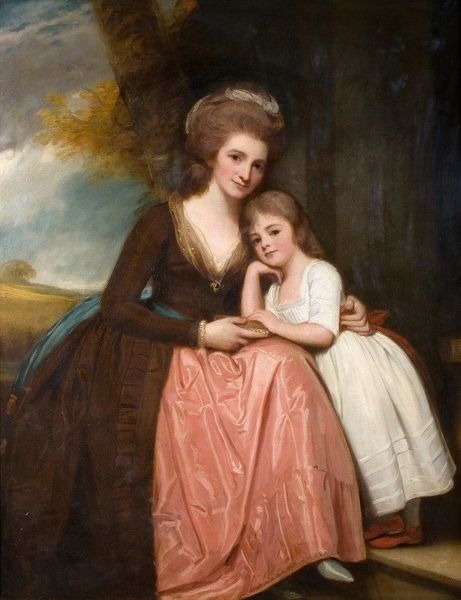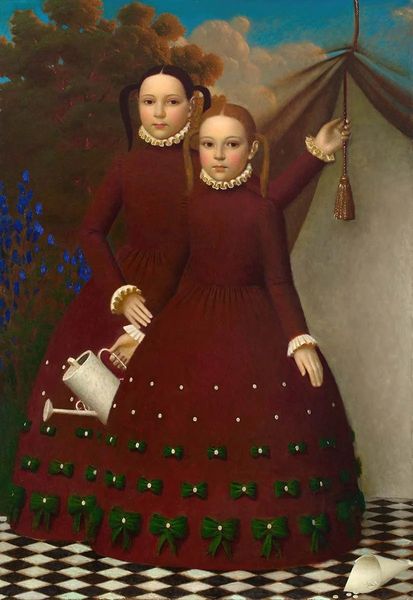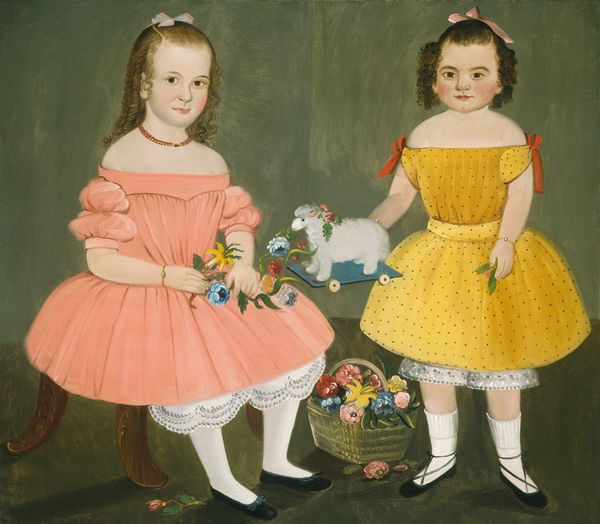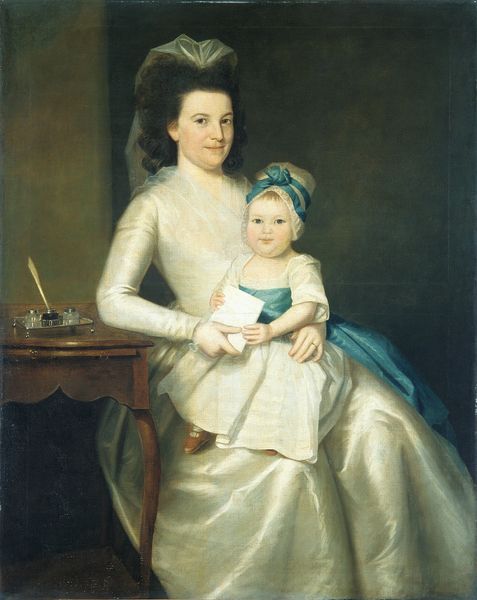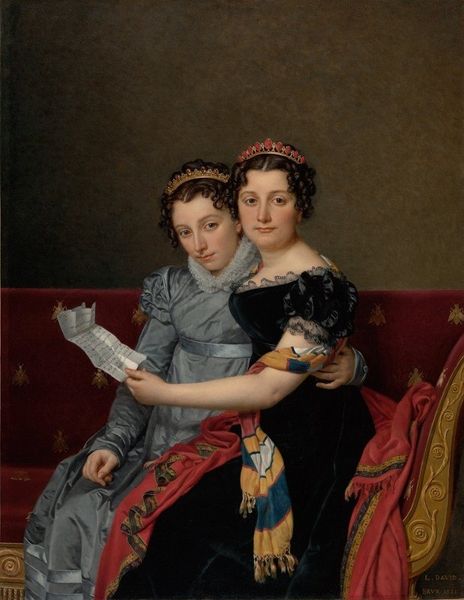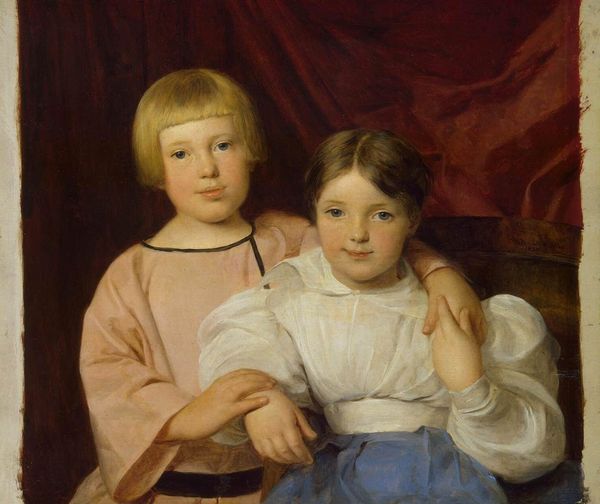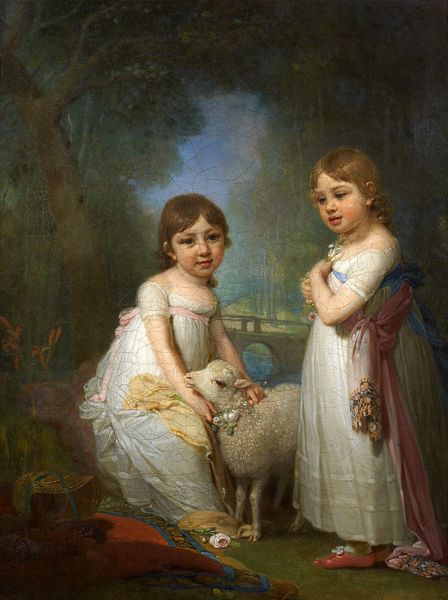
painting, oil-paint
#
portrait
#
gouache
#
painting
#
oil-paint
#
group-portraits
#
romanticism
#
genre-painting
#
academic-art
#
fine art portrait
Dimensions: overall: 151.2 x 108 cm (59 1/2 x 42 1/2 in.)
Copyright: National Gallery of Art: CC0 1.0
Curator: The artwork before us, painted by Jacob Eichholtz in 1818, is titled "The Ragan Sisters." A classic example of early 19th-century American portraiture, rendered in oil paint with hints of Romanticism. Editor: It has a sweet, almost fairytale-like quality to it. These two young girls, bathed in this soft light, almost seem to float on the canvas. And the flowers! Very Alice in Wonderland, if you ask me. Curator: That “sweetness” speaks volumes about the social and cultural position of young women during this period. Childhood was increasingly seen as a time of innocence, reflected in the girls' matching white dresses—symbols of purity and virtue. The Romantic sensibility prized emotionality and idealization. Editor: True, but there's something unsettling too. Their expressions feel... guarded. Almost as if they're presenting themselves for an audience, which, in a way, they are, I suppose, frozen in time like specimens. Curator: This brings us to consider how portraiture functioned within 19th-century society. Such paintings served to memorialize, yes, but also to assert social standing. A commission like this would signal the Ragan family’s affluence. Editor: I am very aware. I almost get a whiff of power, of genteel social control simmering beneath all the frills and roses. Even their positioning –one gently imposing a possessive arm around the other – smacks a tad of some hidden, and perhaps unrealized, narrative. Curator: And we must not forget that Eichholtz, while considered one of the leading portrait painters in Pennsylvania, likely imposed certain conventions. The setting – perhaps evoking a garden or some kind of private, secure place – the clothing, the props, would be largely determined and shaped by existing societal ideals of women's lives. Editor: Which means that every petal and fold speaks a loaded, deliberate story. Suddenly those pale, perfect dresses begin looking like… a trap. Not in a literal way, mind you! Yet this awareness grants it, as an artifact, an added intriguing dimension. Curator: Precisely. Thinking through all these historical and social threads grants us, and perhaps helps reclaim for our time, an appreciation of both its artistry, and the broader issues about class, identity, and representation that all contribute to how, to this day, these narratives affect and even limit people. Editor: Definitely gave me shivers, that painting, the lovely and troubling sort. Curator: An encounter such as that proves what a vital document the painting constitutes within American cultural history.
Comments
No comments
Be the first to comment and join the conversation on the ultimate creative platform.
